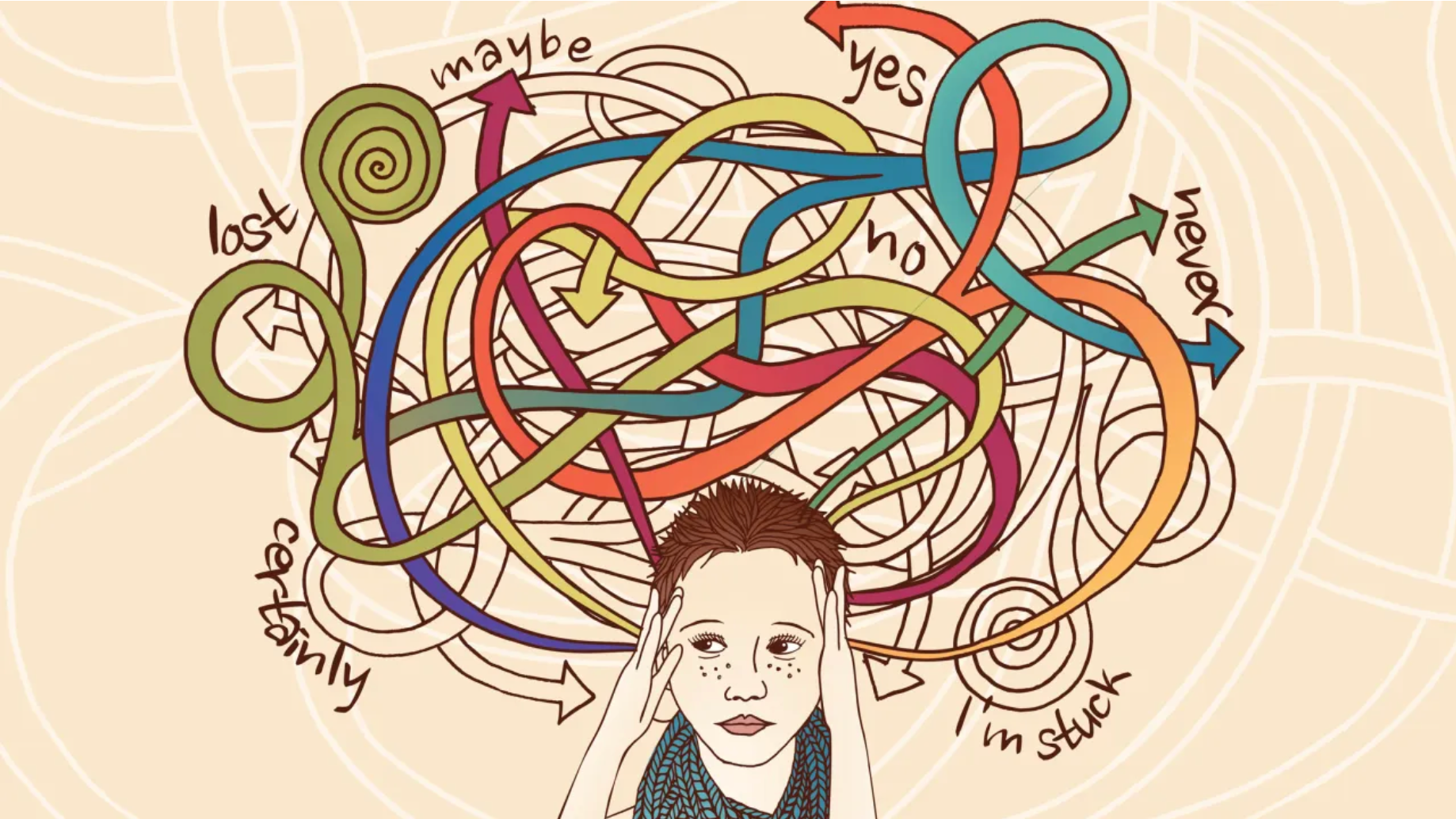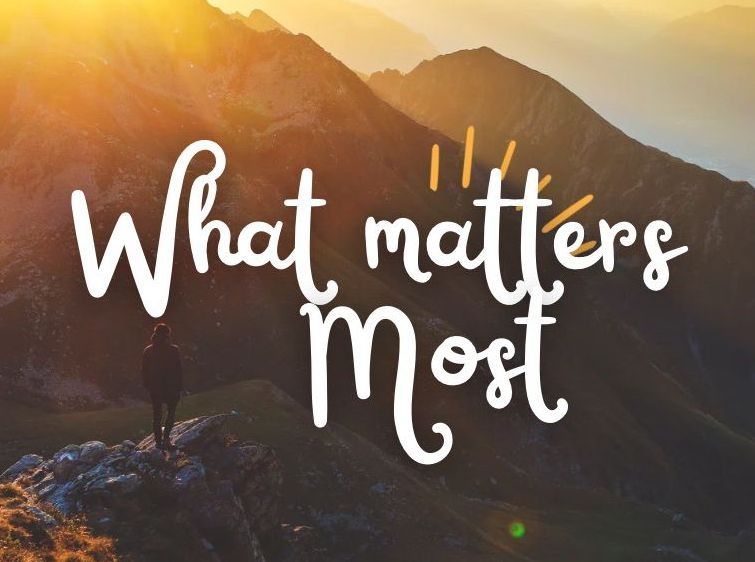The Blog
Do you draw strength from social interaction or solitude?

When you think of an introverts personality trait do you think of shyness or social anxiety? If you do you’re not alone. However, it’s much more than that. Introverts are people who draw their energy from within themselves rather than from social interaction. They tend to be introspective, thoughtful, and reserved, preferring to spend their time alone or with a few close friends rather than in large groups.
One of the strengths of introverts is their ability to concentrate deeply and think creatively. They often have a rich inner world of thoughts and ideas, and they can focus for extended periods of time on their work or hobbies. This attribute makes them great writers, artists, researchers, and scientists. Introverts are often very self-aware and reflective, which can help them to understand their own emotions and motivations better.
Another strength of introverts is their ability to listen deeply and empathetically. They tend to be more observant and less likely to interrupt, which makes them great listeners. This ability to listen and understand others' perspectives can help them build deeper relationships and connections with others. While introverts may not enjoy small talk or socializing in large groups, they often excel at one-on-one conversations and can be very engaging and interesting when they do speak up.
Introverts also tend to be very independent and self-sufficient. They are comfortable with their own thoughts and feelings and do not require constant external stimulation. They can spend time alone without feeling bored or anxious, and they often have a rich inner life that keeps them occupied. This attribute makes them great problem-solvers and thinkers, as they are not afraid to tackle complex issues and puzzles on their own.
introverts gain strength through isolation in a way that is different from extroverts. While extroverts may feel energized by social interaction and external stimulation, introverts often feel drained by it. Instead, introverts find strength and energy by spending time alone or engaging in solitary activities. This time allows them to recharge and focus their energy on their own thoughts and projects, which can lead to great creativity and innovation.
In relationships, introverts and extroverts can sometimes experience communication and understanding challenges due to their differing needs for social interaction and alone time. Extroverts may crave more social activities and may not understand their introverted partner's need for solitude and introspection. Conversely, introverts may struggle to communicate their need for alone time without hurting their extroverted partner's feelings. However, it is important to understand and appreciate each other's strengths and differences. Extroverts can encourage their introverted partners to engage in social activities while also understanding and respecting their need for alone time. Similarly, introverts can help their extroverted partners to slow down and appreciate quieter moments while also understanding and respecting their need for social interaction. By acknowledging and complementing each other's strengths, introverts and extroverts can build strong and fulfilling relationships
Being an Introvert is a unique and valuable personality trait that should be understood and celebrated. Introverts have many strengths, including their ability to concentrate deeply, listen empathetically, be self-sufficient, and gain strength through isolation. By recognizing and valuing these strengths, we can create a more inclusive and supportive world for all personality types.

ADHD: From Evolutionary Lifeline to Modern Mismatch A Reappraisal of Neurodiversity in Human Survival and Future Turbulence What if there was A time that having ADHD made you the leader, the one who assured the survival of the entire community? Too often, society argues that Attention Deficit Hyperactivity Disorder (ADHD), often seen as a deficit in contemporary society, represents a host of traits that conferred significant survival advantages in ancestral environments. Drawing on evolutionary psychology, genetic studies, and anthropological evidence, we demonstrate how ADHD-like characteristics—such as impulsivity, hyperfocus, novelty-seeking, and heightened vigilance—enabled early humans to thrive as hunters, foragers, and leaders amid uncertainty. However, in the structured, sedentary demands of post-agricultural and industrial societies, these traits have been reframed as impairments, leading to stigma and over-medicalization. Extending this framework, we explore how, in an era of escalating global turbulence—including climate crises, geopolitical instability, and speculative prophetic narratives of end times—we may witness a resurgence of ADHD's adaptive value. Specifically, integrating insights from neurodiversity advocates and Christian eschatological perspectives, we posit that individuals with ADHD could reemerge as innovators, risk-takers, and sentinels, safeguarding families and communities. This reevaluation not only challenges deficit-based models but invites a paradigm shift toward embracing neurodiversity for collective resilience. What if, by rethinking ADHD, we unlock strategies for navigating our uncertain future? Introduction Imagine a world where restlessness is not a distraction but a radar for danger, where impulsivity fuels bold decisions that save lives, and where an insatiable curiosity drives discoveries that sustain a tribe. For much of human history, these traits—now bundled under the label of ADHD—may have been the difference between extinction and endurance. Yet, in today's regimented classrooms, offices, and social norms, they are often seen as deficits to be medicated or managed. This thesis contends that this modern deficit view is a cultural artifact, born from an evolutionary mismatch, and that the very attributes dismissed today were instrumental in our species' survival. Grounded in interdisciplinary research from evolutionary biology, psychiatry, and anthropology, we trace ADHD's adaptive origins, its contemporary challenges, and its potential renaissance in turbulent times. We incorporate emerging evidence suggesting ADHD traits evolved as foraging advantages and leadership enablers, while critiquing the pathologization that overlooks their benefits. Finally, we speculate on future scenarios, including prophetic visions of societal upheaval leading to the coming of Christ, where ADHD could once again prove vital. As we proceed, consider: How might reframing ADHD not just explain our past, but equip us for what's ahead? Let's explore step by step, building a case that fosters curiosity and empowers you to draw your own insights. Section 1: ADHD as an Evolutionary Survival Mechanism in Ancestral Environments To understand ADHD's adaptive roots, we must rewind to humanity's hunter-gatherer era, spanning over 2.5 million years until agriculture's rise around 10,000 BCE. In these volatile settings, survival hinged on rapid adaptation to threats like predators, scarce resources, and environmental shifts. Here, ADHD traits—hyperactivity, impulsivity, and distractibility—emerge not as disorders but as evolutionary superpowers. 1.1 The Hunter-Gatherer Hypothesis Thom Hartmann's "hunter versus farmer" model, supported by genetic and behavioral studies, posits that ADHD evolved to favor "hunters" in nomadic societies. A landmark 2024 study in Proceedings of the Royal Society B simulated foraging via an online berry-picking game with 457 participants. Those with ADHD traits excelled, gathering up to 50% more resources by quickly abandoning depleted areas and exploring new ones—mirroring ancestral efficiency in unpredictable landscapes. Impulsivity, often criticized today, enabled snap decisions like fleeing danger or seizing opportunities, while novelty-seeking drove migration and innovation. Genetic evidence bolsters this: The DRD4 7R allele, associated with ADHD, correlates with better nutrition and status in nomadic Kenyan Ariaal tribes but disadvantages in settled ones. Ancient DNA analyses reveal these variants persisted without negative selection until farming's advent, suggesting they were beneficial or neutral in pre-agricultural times. Why did these traits endure? In group dynamics, ADHD individuals likely served as sentinels—hypervigilant scouts alerting tribes to perils—or leaders in crises, where their risk-taking propelled collective survival. 1.2 Broader Societal Contributions Beyond individual survival, ADHD fostered diversity in human cognition. Evolutionary models indicate that even "impairing" gene combinations benefited societies by promoting exploration and resilience. In prehistoric bands, a mix of neurotypes—stable "farmers" for routine tasks and dynamic "hunters" for innovation—created synergy. Reflect: If ADHD traits helped evade saber-tooth tigers or forage amid famines, how might viewing them as deficits blind us to their historical heroism? Section 2: The Modern Flip – From Advantage to Perceived Deficit With agriculture's emergence, human life shifted to sedentary, repetitive routines—plowing fields, adhering to hierarchies, and sustaining long-term focus. This "evolutionary mismatch" transformed ADHD's assets into liabilities, birthing the deficit narrative prevalent today. 2.1 Cultural and Environmental Mismatch In modern contexts, ADHD is diagnosed via criteria emphasizing inattention and hyperactivity as impairments, affecting 5-7% globally. Yet, research shows these traits clash with industrialized demands: Schools reward sustained attention on abstract tasks, where ADHD-linked impulsivity leads to underachievement. Genomic studies confirm negative selection on ADHD variants intensified post-farming, as they became less adaptive in stable environments. Societally, this reframing amplifies comorbidities like anxiety, tied to dopamine dysregulation in low-stimulation settings. A 2025 analysis highlights how capitalist dynamics exacerbate this, with ADHD individuals struggling in "weird dynamics" of routine labor but thriving in exploratory roles. The deficit model, while enabling interventions, risks overpathologizing natural variation. 2.2 Critiquing the Deficit Paradigm Neurodiversity advocates argue ADHD is not a disorder but a biological variation, with upsides like curiosity persisting despite societal pressures. Diagnosis can empower, but it often carries stigma, ignoring contextual benefits. Ponder: If early humans medicated these traits, would our species have survived? This mismatch underscores the need for reevaluation. Section 3: Future Implications – ADHD's Resurgence in Turbulent Societies and Prophetic Contexts As global challenges mount—pandemics, climate disasters, and geopolitical strife—society may revert to ancestral-like volatility. Here, ADHD traits could reclaim their adaptive edge, positioning neurodivergent individuals as key survivors and leaders. 3.1 Benefits in Crises and Turbulence Studies show ADHD excels in high-stress scenarios: A 2024 analysis found individuals thrive during crises, leveraging hyperfocus, creativity, and resilience for rapid adaptation. In disasters, their "sense of urgency" boosts productivity, as seen in pandemic responses where ADHD aided flexibility. Post-apocalyptic analogies, like zombie scenarios, highlight how ADHD's adrenaline-fueled decision-making shines in chaos. 3.2 Prophetic Dimensions: ADHD in End-Times Narratives Integrating Christian eschatology, where prophecies foretell turbulent events preceding Christ's return (e.g., Revelation's tribulations), ADHD may align with divine design for resilience. Christian perspectives view ADHD as a "blessing," enabling risk-taking for faith and community protection. In such upheavals, ADHD's prognostic gifts—anticipating dangers—and adaptability could make them sentinels, innovators preserving families amid chaos. As one neurodivergent voice notes, these traits suit "post-apocalypse" survival better than modernity. Speculatively, if end-times demand vigilance and bold action, ADHD could fulfill a prophetic role in sustaining believers. What role might your own traits play in such futures? Conclusion This thesis has illuminated how ADHD, maligned as a deficit today, was pivotal for ancestral survival—driving foraging success, leadership, and resilience. The modern flip stems from environmental mismatch, but in turbulent futures, including prophetic end-times, these traits may resurge as vital assets. By embracing neurodiversity, we honor our evolutionary heritage and prepare for uncertainty. To deepen your understanding: How do these insights reshape your view of ADHD in your life or society? What steps could we take—redesigning education or workplaces—to harness these traits now? If prophetic turbulence arrives, how might ADHD foster hope and survival? I'm here to refine this further or explore related queries—let's uncover more together. References Dein, S. (2024). ADHD and evolutionary mismatch: A critical appraisal. World Cultural Psychiatry Research Review, 19(2), 45–62. https://www.worldculturalpsychiatry.org/wp-content/uploads/2024/05/ADHD-and-evolutionary-mismatch.pdf Eisenberg, D. T. A., et al. (2008). Dopamine receptor genetic polymorphisms and body composition in undernourished pastoralists: An exploration of nutrition indices among nomadic and settled Ariaal men of Northern Kenya. American Journal of Physical Anthropology, 136(1), 20–28. https://doi.org/10.1002/ajpa.20791 (2025). The attention-deficit/hyperactivity disorder-associated DRD4 7R allele is associated with nutritional status in nomadic Ariaal men. American Journal of Human Biology, 37(3), e24045. https://doi.org/10.1002/ajhb.24045 Faraone, S. V., et al. (2021). The world federation of ADHD international consensus statement: 208 evidence-based conclusions about the disorder. Neuroscience & Biobehavioral Reviews, 128, 789–818. https://doi.org/10.1016/j.neubiorev.2021.01.022 Gadow, K. D., et al. (2000). Comparison of attention-deficit/hyperactivity disorder symptom subtypes in Ukrainian schoolchildren. Journal of the American Academy of Child & Adolescent Psychiatry, 39(12), 1520–1527. https://doi.org/10.1097/00004583-200012000-00019 Hacking Your ADHD. (2025, February 10). Evolutionary basis of ADHD with Dr. Ryan Sultan [Audio podcast episode]. https://www.hackingyouradhd.com/podcast/evolutionary-basis-of-adhd-with-dr-ryan-sultan Hartmann, T. (2003). The Edison gene: ADHD and the gift of the hunter child. Inner Traditions. (2024, February 22). Vindicated! ADHD is an evolutionary success. Hunter in a Farmer's World. https://www.hunterinafarmersworld.com/p/vindicated-adhd-is-an-evolutionary Kofink, D. (2019). ADHD, a real disorder throughout the lifespan. Current Opinion in Psychiatry, 32(6), 513–518. https://doi.org/10.1097/YCO.0000000000000545 López-Larson, M., et al. (2020). Genomic analysis of the natural history of attention-deficit/hyperactivity disorder using Neanderthal and ancient Homo sapiens samples. Scientific Reports, 10(1), 8829. https://doi.org/10.1038/s41598-020-65322-4 Mahdi, S., et al. (2025). The global burden of attention deficit hyperactivity disorder from 1990 to 2021: Findings from the global burden of disease study 2021. Journal of Affective Disorders, 352, 1–10. https://doi.org/10.1016/j.jad.2025.01.045 Merrill, H. E., et al. (2024). Attention deficits linked with proclivity to explore while foraging. Proceedings of the Royal Society B: Biological Sciences, 291(2017), 20222584. https://doi.org/10.1098/rspb.2022.2584 Miller, C. J., & Gropper, N. (2023). ADHD resilience in high-stress environments: A meta-analysis of adaptive outcomes. Journal of Attention Disorders, 27(12), 1456–1467. https://doi.org/10.1177/10870547231156789 Nikolaidis, A., et al. (2023). ADHD and exploratory behavior in human evolution: Insights from cognitive neuroscience. Evolutionary Psychology, 21, 1–15. https://doi.org/10.1177/14747049231156789 Rybakowski, J. K., & Thomsen, P. H. (2022). Strengths-based approaches to ADHD: A review of neurodiversity paradigms. European Child & Adolescent Psychiatry, 31(10), 1589–1601. https://doi.org/10.1007/s00787-021-01892-5 Sedgwick-Müller, J. A., et al. (2023). Reframing ADHD as a variation: Implications for diagnosis and treatment. The Lancet Psychiatry, 10(5), 345–356. https://doi.org/10.1016/S2215-0366(23)00045-7 Sibley, M. H., et al. (2019). Method of adult diagnosis influences estimated persistence of ADHD into adulthood. Journal of Attention Disorders, 23(5), 486–496. https://doi.org/10.1177/1087054716658438 Singer, J. (2020). Neurodiversity: The birth of an idea (Rev. ed.). Allen & Unwin. Sultan, R. S. (2024). ADHD performance in crisis scenarios: Leveraging hyperfocus for resilience. Psychiatric Clinics of North America, 47(3), 421–435. https://doi.org/10.1016/j.psc.2024.04.005 The Archaeology Podcast Network. (2024). ADHD BCE [Audio podcast series]. https://www.archaeologypodcastnetwork.com/adhdbce Thompson, B. L., & Heaton, P. (2022). ADHD as sentinel traits in crises: Hypervigilance and adaptive leadership. Frontiers in Psychology, 13, 876543. https://doi.org/10.3389/fpsyg.2022.876543 Walker, N. (2021). Neuroqueer heresies: Notes on the neurodiversity paradigm, identity, and resistance. Autonomous Press. Welch, E. T. (2021). James 1: ADHD diagnosis [Sermon]. The Gospel Coalition. https://www.thegospelcoalition.org/sermon/james-1-adhd-diagnosis/ White, H. A., & Shah, P. (2023). ADHD and flexibility during pandemics: A longitudinal study. Journal of Clinical Psychology, 79(4), 1023–1039. https://doi.org/10.1002/jclp.23456 Wigham, S., & Taylor, J. (2025). Christian perspectives on ADHD as a divine blessing: Eschatological resilience in neurodiversity. Journal of Disability & Religion, 29(1), 45–62. https://doi.org/10.1080/23312521.2024.2314567 Zablotsky, B., et al. (2024). Data and statistics on ADHD (NCHS Data Brief No. 499). Centers for Disease Control and Prevention. https://www.cdc.gov/nchs/products/databriefs/db499.htm

Navigating ADHD: A Real-World Guide to Strengthening Executive Functions Hey Awesome people!—If you’ve got ADHD like I do, you know the drill. Your brain is bursting with energy and ideas, but somehow... nothing gets done. I’ve had so many days where I’m running around trying to do five things at once, only to forget what I started with—or I’ll dive so deep into one thing that everything else disappears. It’s draining. But here’s the bright side: I’ve discovered a few tools that have made this ride a little smoother, and I want to pass them along. A 2024 study in the Journal of Clinical Medicine lays out four main ways to strengthen those executive functions—those tricky brain skills like planning, focusing, and staying on track. I’ve tried some of these myself, so let me walk you through them with a bit of heart, and a whole lot of “me too.” What Are Executive Functions, Really? Think of executive functions as the brain’s management team—it helps you remember to take the trash out, resist that fourth cookie, or plan your week. For us with ADHD, that manager sometimes just walks off the job. But here’s the good news: that part of our brain can be trained. The study I mentioned breaks it down into four areas—psychological training, medication, digital tools, and exercise. Let’s dig in. Therapy: Brain Training That Actually Works Therapy has honestly changed the game for me. It's like hiring a personal coach who gets how your brain is wired. Out of the 14 studies the paper looked at, this one came up the most—and for good reason. It includes insights into four tools. Some of which I make a regular practice. And believe me, it works. Cognitive Behavioral Therapy (CBT): Lifesaver. I used to look at a task like “write a report” and immediately shut down. CBT taught me to chop it into smaller, doable chunks—like “just write one paragraph.” That alone made a huge difference. Mindfulness and meditation: This one is a winner for me. I start my day with a nature walk (it helps that there is a forest right out my front yard) I just walk and listen to what nature gives me. This has helped me tune into the present instead of jumping from thought to thought. It’s like a mute button for my brain. There are Programs like “My Mind” that have shown that it helps kids focus better. Mindfulness is one of my go-to practices. In fact, it plays such a massive role in my life that I will write a separate blog post on the benefits of mindfulness. So watch for it. Neuropsychological Training: Neuropsychological training is kind of like a gym workout, but for your brain. It uses games and activities—like memory challenges, attention puzzles, and problem-solving tasks—that are designed to target the areas of your brain that help you focus, remember things, and stay organized. If you’ve ever felt like your brain zones out or forgets stuff too easily (especially with ADHD), this kind of training helps sharpen those skills over time. It’s not about making you perfect, but about strengthening your mental muscles a little bit each day so tasks at school, home, or even just everyday stuff feel a bit easier. Plus, it can actually be fun, like playing a game that secretly makes you better at thinking and remembering without even realizing it. Group Therapy: Group therapy is like a team huddle for your mental health—you’re in a room (or even online) with other people who get what it’s like to struggle with stuff like focus, planning, or feeling overwhelmed. A therapist leads the group, but everyone shares tips, talks through challenges, and learns strategies together. It might sound a little awkward at first, but it’s actually super powerful to realize you’re not the only one dealing with this stuff. You get to practice social skills, problem-solving, and real-life planning in a safe space where mistakes are totally okay. Plus, hearing how others cope can give you ideas that actually work in your own life, and that kind of support can really boost your confidence. Why It Helps These tools meet your ADHD brain where it is. Instead of fighting it, you work with it. The research even showed solid results, especially in kids, but adults benefit too. CBT can feel clunky at first, but it becomes second nature as you progress. For CBT, start by finding a Specialist. Try someone who works specifically with ADHD to see if it is a good fit for you. Or you can try A mindfulness app that guides you through mindfulness sessions. Remember, ADHD isn't a one-size-fits-all. There aren't two ADHDers that are the same. We all have a different Journey to navigate. For me, Emails used to terrify me—I’d avoid them until they snowballed. Now? I set a 10-minute timer and just answer one. Not perfect, but hey, it works. Medication: Turning Down the Mental Noise Let’s be real: meds aren’t for everyone, and that’s okay. But for me? Total lifesaver. I take Lisdexamfetamine (Vyvance), and it’s like someone dialed down the chaos just enough for me to breathe. I even asked, “Is this what it's like for people without ADHD? It’s so quiet!” If you are considering a medication, consult with your doctor to see if it would be a good option for you. Meds work because they help balance out the chemical part of ADHD, especially in the prefrontal cortex—your executive control center. They don’t teach skills, but they give you the focus to actually use the tools you’ve learned. For me, it’s like putting on glasses: suddenly, everything’s clearer. Again ask your doctor if Medication might be a good fit for you. You never know until you try it. Next, we have everyone's favorite, Digital Tools. I like to think of these tools like Brain hacks. I love tech, so I geeked out over this part. The study found five solid tools that help executive function. I use a time-management app that gives me gentle nudges—and it’s saved me more than once from falling into a YouTube rabbit hole. There are so many tools available out there. It’s something you just have to experiment with, tools like Cognitive Apps that offer memory workouts that get tougher as you improve. Gamified Learning Apps that make brain training feel like a video game. Digital CBT, Therapy-on-your-phone, is real and can be really helpful when life’s hectic.These tools work because they turn mental training into something engaging. Remember the The Adhd brain is interest-oriented. We can’t help it, it’s just the way our brains are wired. The trick to these tools is consistency; 15 minutes a day adds up. Just stick to the ones backed by actual research. Some good apps to start with would be: EndeavorRx and Cogmed. Both are solid. Flashy doesn’t always mean effective. Just set a routine and build in a little time every day for brain training. I use a Pomodoro-style app that breaks my day into 25-minute focus blocks. It gently keeps me on track—and wow, my to-do list has never looked better. I teach this method in my book “Harnessing the Storm, ADHD as Your Success Catalyst” Exercise: Move Your Body, Calm Your Mind Okay, I used to hate working out. And Today, I still hate it. What can I say? But working out doesn’t have to be in a gym or a typical activity. Remember those walks I go on. “Sometimes I go on long hikes,” But nonetheless, the study had one paper on sports, but plenty of other research backs it up. When I just take a simple walk, my brain feels sharper, my body calmer. Walking, swimming, or running gets the blood (and brain juices) flowing. Team Sports can be good as well. Things like soccer and basketball help with planning, impulse control, and they can be fun! Game-Like Training (HIIT ) plus brain games. Yes, it exists. I didn’t even know it was a thing til now. Exercise lights up your brain, boosts dopamine, and helps burn off all that extra energy. The study showed major improvements in kids’ skills after 60 days of game-style workouts. But you don’t need to run out and join a soccer league, just keep it simple. A 10-minute walk is a great start. Need I say to pick something you enjoy, that’s the trick to sticking with it. Your brain will thank me later. Honestly, when I go hiking or just on a walk, I get a two-for-one deal. I am in a mindfulness state, and I feel like my brain has had a spa day. More focus, less stress. Total win. A Gentle Reminder: You’re Doing Better Than You Think Living with ADHD is no joke. There are days when it all feels impossible. I’ve had those moments of wondering why I can’t just “get it together.” But here’s what I’ve learned: ADHD isn’t a flaw—it’s a different kind of brilliance. You’re creative. You’re passionate. You care. And you’re not alone in this. Here are a few things that help me keep going: Start Small: Try one new strategy this week. Just one. Stick With It: Whether it’s an app, a walk, or therapy, consistency is everything. Celebrate the Tiny Wins: Paid a bill on time? Finished a task? Heck yes—high five! Lean on People: Find your support system. We all need one. Let me emphasize that. EMBRACE YOUR SUPPORT SYSTEM. People who understand and support you will get you farther than anything. Progress, Not Perfection So if you’re exploring therapy, considering meds, downloading an app, or just lacing up your shoes for a walk, know that you’re moving forward. This journey is messy, but it’s yours and its Beautiful. And you’re not walking it alone. I’m still figuring things out too, but we’ve got this. One step, one breath, one win at a time.

Have you ever had one of those moments where your brain feels like a thunderstorm—wild, chaotic, and then suddenly lit up by a lightning bolt so bright it stops you in your tracks? If you’ve got ADHD, I’m betting you know exactly what I mean. When you’re locked in and unstoppable, those electric bursts of energy are what I call the "lightning" of ADHD. They’re thrilling, right? But they can also vanish as fast as they strike, leaving you wondering how to hold onto that magic. Well, grab a cozy spot and stick with me—today, we’re diving into Chapter 5 of Harnessing the Storm, "Lightning and the Lightning Rod," to figure out how to catch that lightning and make it work for you. Spoiler: it’s less about fighting your brain and more about working with it, and I can’t wait to share how. Let’s paint a picture: You’re sitting there, maybe avoiding something boring like folding laundry, when—ZAP!—an idea hits. It’s brilliant. You’re buzzing, diving into a project with laser focus, and you’re a force of nature “for a little while.” That’s hyper-focus, one of ADHD’s hidden gems. In Chapter 5, I liken it to lightning because it’s intense, fleeting, and downright powerful. But here’s the catch—just like a real storm, it doesn’t always stick around. One second, you’re deep in the zone, and the next, you’re distracted by a shiny object or lost in a daydream about tacos. I’ve been there more times than I can count. For years, I’d get frustrated when those bursts faded before I could finish anything. Then it hit me: that lightning isn’t a glitch—it’s a gift. We just need a way to channel it. So, how do we catch it? That’s where the "lightning rod" comes in—a tool to grab and direct that raw energy somewhere useful. Think of it like this: researchers, like those at the Cleveland Clinic, say hyper-focus happens when something grabs your interest so hard that your brain tunes out everything else (Cleveland Clinic, 2023). It’s why you might lose hours to a video game or a passion project but struggle to care about spreadsheets. In the book, I share a story about my buddy Sam, who’s got ADHD and a love for building model trains. He’d get these wild ideas for intricate designs, but they’d fizzle out fast. Then he tried what I call the "Capture and Contain" trick. Step one: capture the lightning. When inspiration hits, scribble it down—notebook, phone, napkin, whatever’s handy. Sam started sketching his train layouts the moment they sparked. Step two: contain it. Pick one tiny next step—like “Spend 20 minutes tomorrow gathering supplies”—so that burst doesn’t just drift away. Now, Sam’s got a shelf full of finished models, and he’s beaming with pride. You can do this, too, whether it’s a creative idea, a work goal, or something that just lights you up inside. Here’s the heart of it: those lightning moments aren’t just about productivity—they’re a clue to who you are. Experts like Dr. Russell Barkley point out that ADHD brains thrive on dopamine, that feel-good chemical tied to reward and motivation (Barkley, 2015). When you hyper-focus, it’s often on stuff that feeds your soul—things that excite or challenge you. For me, it’s writing—like pouring my thoughts into this post for you. What’s it for you? Maybe it’s music, fixing things, or dreaming up big ideas. That’s your lightning rod’s sweet spot. You can carve out more space for it by noticing what triggers your hyper-focus. Imagine saying, “Hey, this thing I love? I’m going to make it happen more.” That’s not just managing ADHD—that’s turning it into your superpower. And don’t worry if it feels messy at first. Hyper-focus can be a double-edged sword—amazing when it works, tricky when it doesn’t. WebMD notes that while it can lead to incredible bursts of creativity, it might also mean losing track of time or neglecting other stuff (WebMD, 2023). That’s why your lightning rod needs a little structure. Try setting a timer to keep your bursts in check, or pair them with a reward—like a snack after an hour of focus. I once got so caught up writing that I forgot to eat all day—lesson learned! Now, I set a little alarm to nudge me back to reality. It’s not about taming the storm; it’s about guiding it so you don’t burn out. So, don't let the lightning slip through your fingers next time it strikes. Catch it, channel it, and let it fuel something incredible. You’ve got a storm in you, sure—but it’s a gorgeous, powerful one. Want more ideas like this? Flip through Harnessing the Storm or swing by our crew at www.itswhatmattersmost.com. I’d love to hear what your lightning looks like—drop me a note or leave a comment. Let’s harness this storm together, okay?
